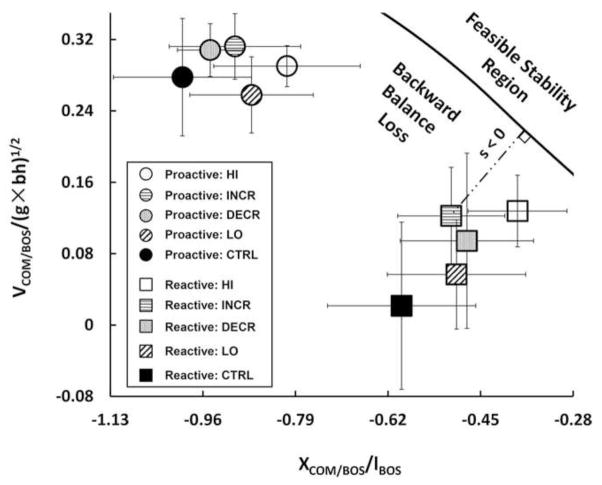Fig. 5.
The instantaneous COM state of the five groups in proactive control (right touch down) and reactive control (left lift off) upon a novel overground slip (Y axis: relative COM/BOS velocity; X axis: relative COM/BOS position). S indicates the stability of a COM state, which is the perpendicular distance (dash line) between the COM state and the threshold for backward balance loss (thick solid line between backward balance loss and feasible stability region). S<0 means the stability of COM state was slower and more posterior than the boundary. Greater stability values indicate greater stability against backward balance loss (Pai et al., 2003). Position and velocity of the COM relative to the BOS are dimensionless variables expressed as a fraction of lBOS and , respectively, where lBOS represents the foot length, g is gravitational acceleration, and bh the body height.

